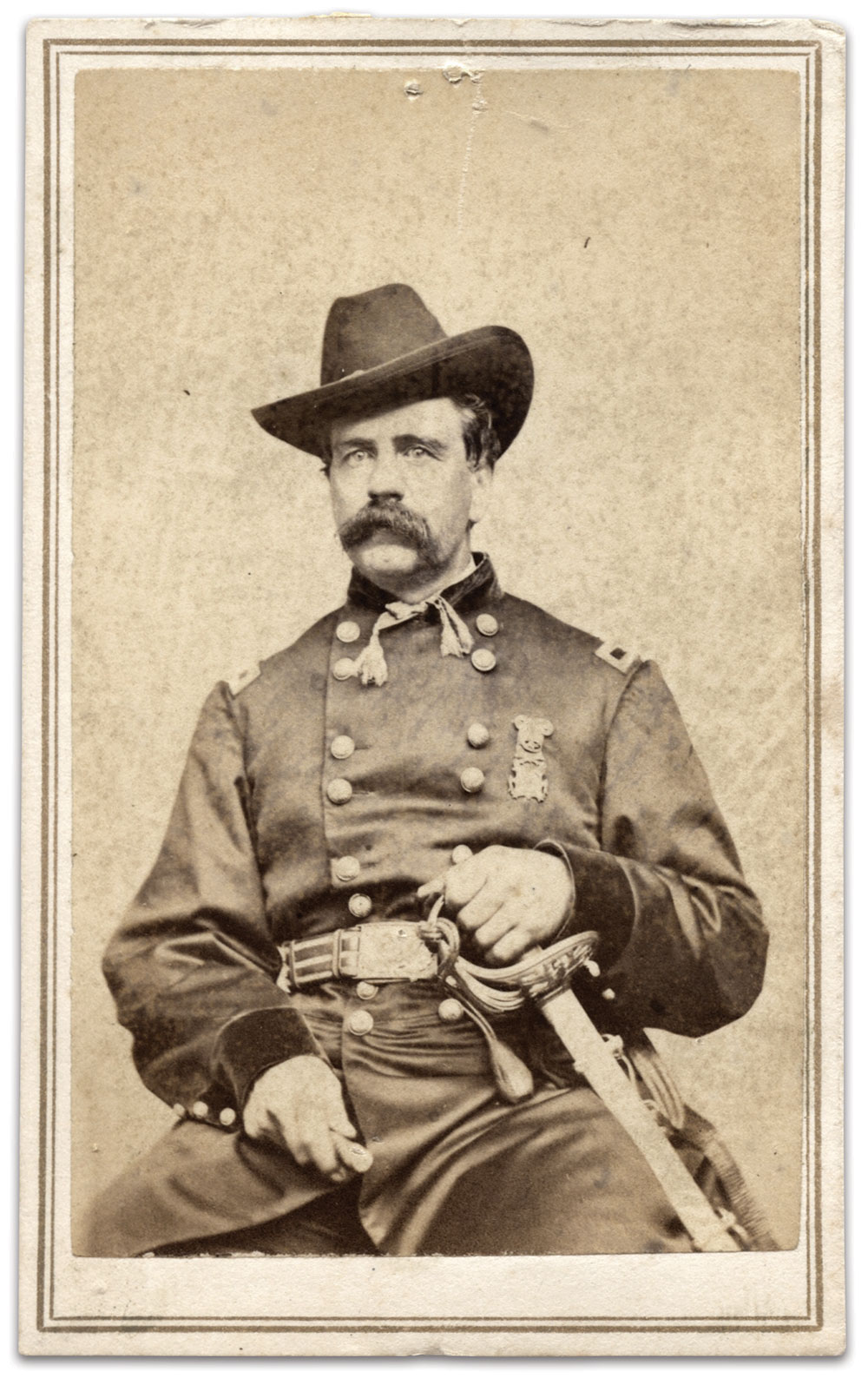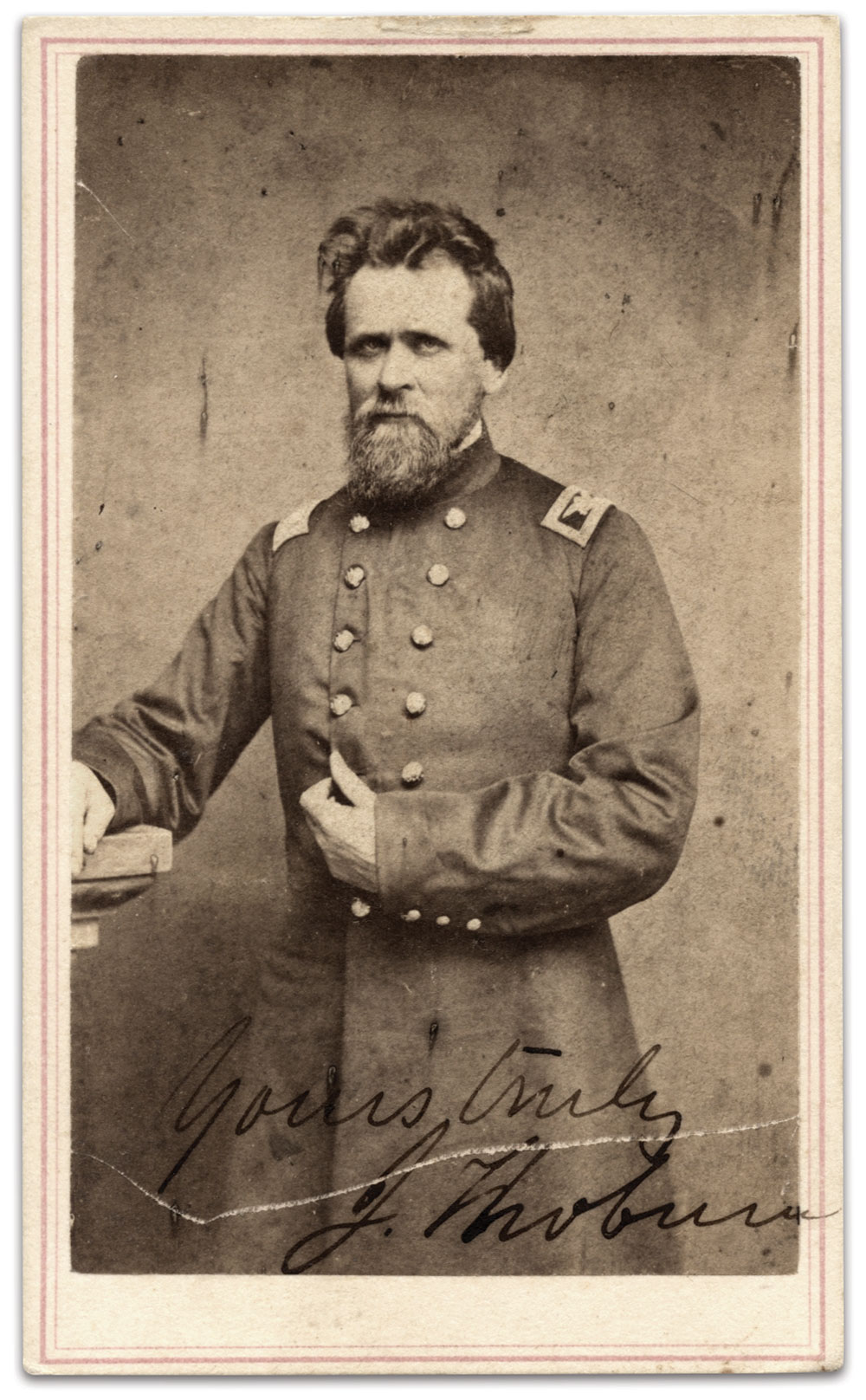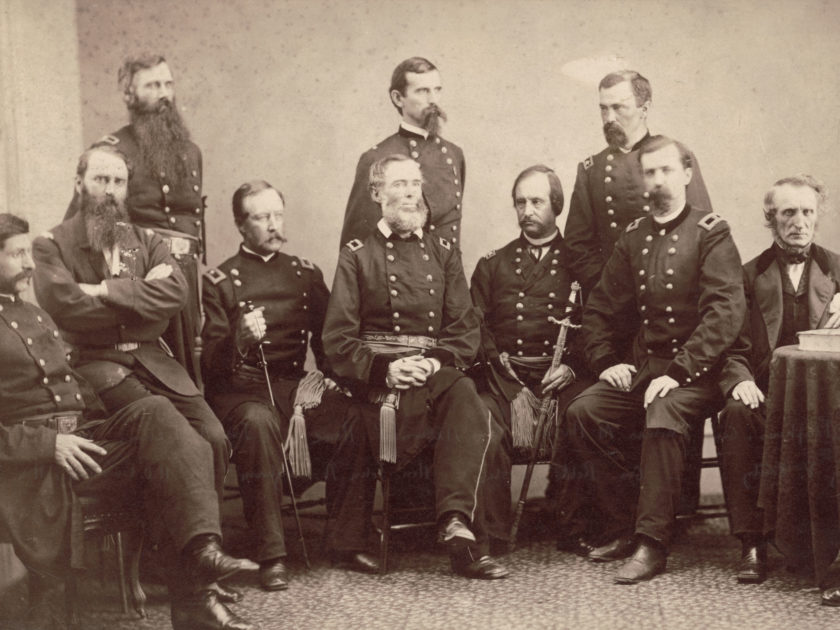By Richard A. Wolfe
In the summer of 1861, the Restored Government of Virginia in Wheeling recruited volunteers to meet federal quotas and to preserve its borders. Two years would pass before West Virginia, the only state formed as a direct result of the Civil War, received statehood.
There were few men with military experience in the counties west of the Allegheny Mountains to lead the recruits. There was no shortage of men who wished to be colonels, but many failed the application process. As in other walks of life, true leaders rose to the top. Some of these men were physicians.
In the modern military, we do not make a surgeon a combat commander. The Civil War, however, was no ordinary time. Three doctors rose to become colonels of West Virginia volunteer regiments. Successful commanders all, the path of each man to the colonelcy varied. One received his spread-eagle shoulder straps after he raised a regiment. Two others, originally commissioned surgeons, advanced to command by their own merits in unusual circumstances.
These exceptional men went on to lead brigades and divisions. Military service would likely have been safer as a surgeon as opposed to a colonel. Yet they laid down their scalpel and picked up a sword—a grim reckoning that they would be more useful taking lives than saving them.
The Recruiter

Thomas Maley Harris, a graduate from medical school in Louisville, Ky., tended patients in Gilmer County before the war. When violence from secessionists plagued the county in 1861, he closed his practice and moved his family to Harrisville in neighboring Ritchie County. At the request of Gov. Francis H. Pierpont of the Restored Government, he recruited a regiment. Harris was commissioned a lieutenant colonel of the 10th West Virginia Infantry in March 1862 and made colonel in May.
The regiment initially battled Confederate forces and guerrillas in and around West Virginia. In the summer of 1864, Harris advanced to brigade and division command during Maj. Gen. Philip H. Sheridan’s successful Shenandoah Valley Campaign.
Harris received his brigadier of volunteer’s star in March 1865. Appointed to the nine-member tribunal that presided over the military trial of the Lincoln assassination conspirators, he remained in uniform until 1866. After his return to civilian life, Harris’s occupations included doctor, West Virginia legislator, adjutant general and pension agent. He died at age 93 in 1906, and buried in Harrisville.
The Surprise Choice

Henry Capehart attended Jefferson College in Washington, Pa., and received a medical license in 1849. His credentials helped him become the surgeon of the 1st West Virginia Cavalry in 1861. By 1863, he had risen to brigade surgeon and division medical inspector. When his colonel, Nathan Richmond, resigned later that year, Capehart was given command, even though his brother, Maj. Charles Capehart, and others might have been selected. His promotion took effect on Feb. 22, 1864.
Three months later, on May 20, Capehart commanded the regiment during a hot skirmish against Confederate cavalry along the Greenbrier River in southeastern West Virginia. Forced to ford the swollen river under heavy fire, one of Capehart’s men, Pvt. Watson Karr, was swept off his horse. Capehart swam his horse to rescue Karr. When Karr tumbled over a waterfall, Capehart followed, plunging with his mount over the falls. He surfaced and found an unconscious Karr floating nearby. Capehart pulled him to safety, and later received the Medal of Honor for his actions.
Capehart was recognized by two top cavalrymen before the war’s end. In September 1864, Capehart succeeded to command a brigade composed of the 1st, 2nd and 3rd West Virginia cavalries and the 1st New York Cavalry. Maj. Gen. Philip Sheridan pronouned it “Capehart’s Fighting Brigade.” On April 9, 1865, Gen. George A. Custer assigned Capehart, now a brigadier, to command his 3rd Division.
Capehart received the brevet rank of major general of volunteers for his war service. He resumed his medical practice in and around Martins Ferry, Ohio. After 1880, he moved to Fargo, N.D. He died April 15, 1895, and was buried in Arlington National Cemetery. His wife, Elizabeth, survived him.
The Natural

Irish-born Joseph Thoburn came to America with his parents in boyhood, and, in 1850, earned a degree from Starling Medical College in Columbus, Ohio. He settled in Wheeling in 1853. When war came, he volunteered as the surgeon for the 1st Virginia Infantry, a regiment organized for a three-month enlistment. In this capacity, he treated his colonel, Benjamin F. Kelley, who had suffered a chest wound at the Battle of Philippi on June 3, 1861. Two months later when the regiment’s enlistment expired, the 1st reformed for an additional three years. Thoburn received the colonelcy. Kelley, now a brigadier and not in the best of health, was assigned to command a special military district created to protect West Virginia railroads. After he succumbed to a battle wound, it was said of Thoburn, “A braver and truer man never died.”
Thoburn proved a highly capable commander in various engagements in the Shenandoah Valley, including the First Battle of Kernstown, where he suffered an arm wound, Port Republic, Cedar Mountain, Second Bull Run and other operations.
By the fall of 1864, Thoburn commanded the 1st Division of the Army of West Virginia. On Oct. 19 at Cedar Creek, he commanded a division in Sheridan’s Army of the Shenandoah when Confederate Gen. Jubal Early launched an attack that sent the federals skedaddling. As Thoburn rallied his men, a blue clad Confederate cavalryman rode up and shot him. He fell from his horse mortally wounded.
His former colonel, now Maj. Gen. Benjamin Kelley, mourned, “A braver and truer man never died.”
Thoburn’s remains were carried to Wheeling, and laid in state at Independence Hall (now the U.S. Customs House). His funeral was the largest in the history of the city. His body is buried in Mount Wood Cemetery. His wife, Kate, survived him.
Note: “West Virginia” is used for simplicity and clarity. West Virginia statehood did not come until June 20, 1863. The Restored Government of Virginia, established in Wheeling, remained loyal to the Union.
References: The War of the Rebellion: A Compilation of the Official Records of the Union and Confederate Armies; Compiled Military Service Records, National Archives, Washington, D.C.; Theodore F. Lang, Loyal West Virginia from 1861 to 1865; Herman E. Matheny, Major General Thomas Maley Harris; Charles J. Rawling, History of the First Virginia Infantry; Intelligencer (Wheeling, W.Va.), 1861-1865.
Richard A. Wolfe is President of the Rich Mountain Battlefield Foundation. He is a retired Marine Corps officer and retired information technology manager. He collects West Virginia Civil War photographs, and all the images pictured here are from his collection.
SPREAD THE WORD: We encourage you to share this story on social media and elsewhere to educate and raise awareness. If you wish to use any image on this page for another purpose, please request permission.
LEARN MORE about Military Images, America’s only magazine dedicated to showcasing, interpreting and preserving Civil War portrait photography.
VISIT OUR STORE to subscribe, renew a subscription, and more.

